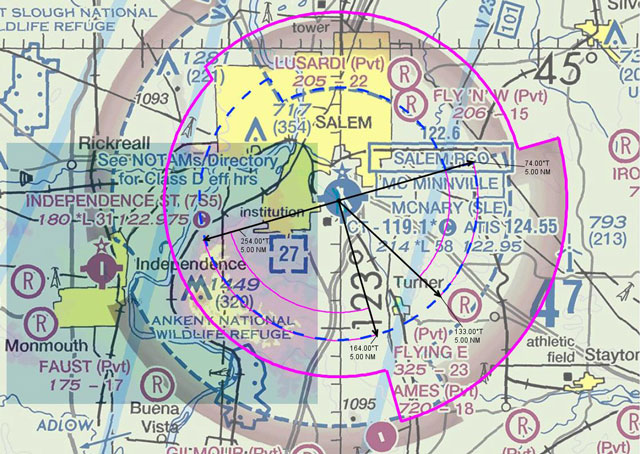Airspace change resolves concerns
Oregon tree farmers gain better aviation access

The FAA has published a final airspace rule that will give tree farmers in the vicinity of Salem, Oregon’s McNary Field better access to their acreage for VFR agricultural flights when the airport’s Class D and E airspace is experiencing ceilings and visibility less than VFR.
AOPA supports the revised airspace configuration that includes new airspace shelves southeast and southwest of McNary Field to better accommodate the needs of the area’s nation-leading Christmas tree-growing and harvesting operations.
The area containing the tree farms also abuts Independence State Airport, which is located in a cutout of the Class D airspace west of McNary Field.
The redesign of the airspace was proposed last September to add a safety margin to McNary’s IFR operations.
The resolution of potential problems for agricultural flights emerged from a collaboration between the FAA, AOPA, Oregon pilots organizations, and the state’s farmers bureau, said Rune Duke, AOPA director of airspace and air traffic.
The final rule, which takes effect May 26, notes that, “After further review, the FAA found some airspace unnecessary for Standard Instrument Approach Procedures during Instrument Flight Rules (IFR) operations at the airport.”
Airspace shelves added to modify the original proposal should “facilitate access, into and out of the impacted [farms] by commercial operators,” the FAA said.
The FAA received 71 responses to its solicitation of comments on the airspace proposal—19 of which expressed concern about the economic impact of planned changes on tree farming. The agency concurred that two-thirds of the local tree farming acreage could be adversely affected.
The agency also responded to comments objecting to making airspace changes outside the normal charting cycle, noting that “pilots are required to consult” the Airport/Facilities Directory (soon to be renamed the Chart Supplement) “before flying in a specific area.” The next edition of the Seattle Sectional chart will take effect May 26.
“It was good to see lots of comments being submitted, and the airspace substantially reduced in size by this process,” Duke said.



